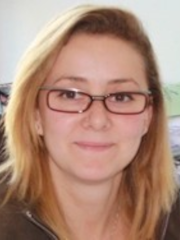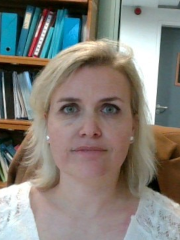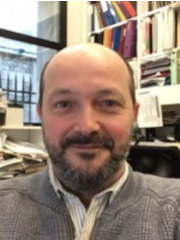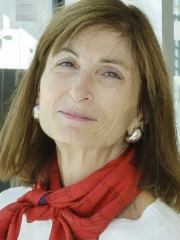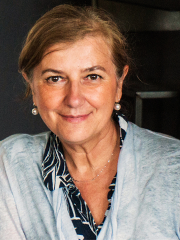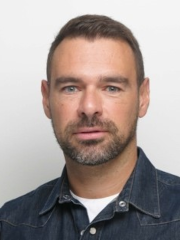
|
|
|
Organizing committee > Local Organizing CommitteeFlorence RUGGIERO, IGFL, ENS de Lyon
Florence Ruggiero is CNRS Director of Research at the Institute of Functional Genomics of Lyon (IGFL, ENS de Lyon) which she led from 2016 to 2020. Her primary research interest focused on cell-matrix interactions and collagen-receptors. She developed innovative methods to produce recombinant collagens in various expression systems including plants to identify collagen binding partners and to resolve extracellular matrix networks. Spanning the past 15 years, the Ruggiero’s lab made original contributions in the extracellular matrix field, from genes to functions, using zebrafish as an organism model. Much of her recent work is centered on decoding the causal relationships between extracellular matrix networks and signaling events that govern tissue formation and regeneration and to examine their possible disruption in diseases. In doing so, her lab further documented the remarkable topological and functional diversity of these multifaceted proteins. Recently, Florence Ruggiero was honored to serve as Chair for the 2017 Collagen GRC and as the editor of the book “The collagen superfamily and collagenopathies”, a volume of the “Biology of Extracellular Matrix” series. She is a past councilor of the International Society for Matrix Biology and the current president of the French Society for Matrix Biology (SFBMec).
Laurent DUCA, MEDyC, Université Reims Champagne-Ardenne
Laurent Duca is full Professor at the University of Reims Champagne-Ardenne where he leads with Pr. Stéphane Jaisson a team dealing with Matrix Aging and Vascular Remodeling. This team belongs to the CNRS associated research unit UMR CNRS/URCA 7369 MEDyC, a major lab specialized in cell/extracellular matrix interactions studies in pathophysiological contexts such as aging and cancer. He is interested in the molecular mechanisms leading to vascular elastolysis and in the role played by elastin-derived peptides (EDP) in the development of vascular diseases such as atherosclerosis. Using integrative technologies from Biochemistry, Cell Biology, Imaging and in vivo murine models (WT or transgenic), he extensively studied the signaling pathways and the operating mechanism of the Elastin Receptor Complex (ERC). The data gathered allowed him to propose a new pharmacology targeting the ERC and permitting to limit the deleterious involvement of elastin peptides in pathological vascular remodeling.
Sabrina KELLOUCHE-GAILLARD, ERRMECe, CY Cergy Paris Université
Sabrina Kellouche is Associate Professor of Cell Biology at CY Cergy Paris University, attached to ERRMECe Lab (Extracellular Matrix-Cell Relations Research Team, MEC-uP Group). Her research fields focus on the cell relation with complex microenvironments (extracellular matrix (ECM) proteins, growth factors, etc) using cellular & molecular approaches. Understanding the cell-ECM interactions involved in physiological (tissue repair) or pathological (tumor dissemination, fibrosis) processes is at the heart of her research concerns. She has acquired solid experience, particularly in the development and reconstitution of microenvironment models which involve molecules of the ECM: 3D cell cultures (fibrin matrix, collagen-GAG-Chitosan matrix), co-cultures of several cell types, development of culture in suspension (tumor spheroids), development of in vitro forensic models of biological traces in criminalistic concerns...The characterization of the matrix microenvironment and its regulating impact on cellular activities stay at the center of her research.
Carine LE GOFF, LVTS, INSERM
Carine Le Goff is a senior scientist at INSERM in France in the laboratory for vascular translational science where she leads a group focusing on molecular and physiopathological bases of HTAA (hereditary thoracic aortic aneurysms) at the UMR 1148 INSERM in Paris. The first objective of her research group is to identify new candidate genes involved in HTAA and second one is to understand the pathogenic mechanism underlying the HTAA. My main project is centered on the understanding of the role of ECM proteins and more precisely ADAMTS, fibrillin-1 in HTAA using cellular and mouse models. Carine obtained her PhD in 2001 at the Orsay university. Her three-year post-doctoral fellowship on ADAMTS proteins in the laboratory of Dr Suneel Apte (Cleveland clinic foundation, Lerner research insititute, USA), led her to develop her interest in ECM and on rare disorders. She continued to study the ADAMTS in rare skeletal disorders during a second post-doctoral fellowship at Necker Hospital. She was recruited in 2009 in Cormier-Daire’s lab (Paris) to work on acromelic dysplasia/ADAMTS/FBN1. Then this lab moved in Imagine institute, UMR1163 in 2014. Recently, in 2017, Carine joined the Boileau/Jondeau’s lab at Bichat hospital. Carine has published more than 40 articles in renowned international journals.
Laurent MULLER, CIRB, Collège de France
Laurent Muller is an INSERM researcher at the Centre Interdisciplinaire de Recherche en Biologie (CIRB) at Collège de France in Paris. His work focus on endothelial cell interactions with the microenvironment in angiogenesis and microvascular integrity. A first aspect investigated concerns vascular basement membrane remodeling and the role of lysyl oxidases, using biochemical, cell biological and imaging approaches. These studies are largely based on the development of state-of-the-art 3D culture models of capillary formation, which also led to applications in tissue engineering. The second focus of his work is indeed the in vitro vascularization of tissue constructs for implantation and organ models, in the context of dental pulp and maxillofacial reconstruction as well as skin healing.
Sylvie RICARD-BLUM, ICBMS, Université Claude Bernard Lyon 1
Sylvie Ricard-Blum is Professor of Biochemistry at the University Lyon 1 (France), where she is Director of the Interdisciplinary Sciences - Health Doctoral School (300 PhD students). She has been Secretary and President of the French Society for Matrix Biology, and President of the International Society for Matrix Biology (ISMB). She is a member of the ISMB Council, editor of the ISMB newsletter and serves as Editor of Matrix Biology and Matrix Biology Plus journals. She is also editor of the HUPO Proteomics Standard Initiative (HUPO-PSI) and co-chair of the HUPO-PSI "Molecular Interactions" and "Protein Modifications" working groups. Her work combines biochemistry, biophysics, bioinformatics and systems biology, and aims at studying ECM structure - interaction - function relationships with a focus on the role of protein intrinsic disorder in the pericellular and extracellular matrix, and on ECM interaction networks in health and disease. Her team has identified hundreds of ECM interactions, built and analysed ECM interaction networks in Alzheimer’s and parasitic diseases, and interaction networks of ECM components such as endostatin, procollagen C-proteinase 1, glycosaminoglycans, proteoglycans, the lysyl oxidase family and tenascin C. Her team has created the ECM interaction database MatrixDB (http://matrixdb.univ-lyon1.fr/), which belongs to the International Molecular Exchange consortium. Her current work focuses on the membrane proteoglycans syndecans, and the cross-linking enzyme lysyl oxidase.
Patricia ROUSSELLE, LBTI, Université Claude Bernard Lyon 1
Patricia Rousselle is a research director at the CNRS in France, where she heads a laboratory in the Department of Tissue Biology and Therapeutic Engineering in Lyon, France. Her group, which develops both biochemical and cell biological approaches, focuses on the analysis of basement membrane assembly and plasticity in tissue remodelling, repair and regeneration. She develops translational research in collaboration with clinicians at the Lyon Burn Centre and with industry partners with the aim of improving skin healing. Patricia is a past president of the French Matrix Society and a board member of the European Society for Tissue Repair.
Ulrich VALCOURT, LBTI, Université Claude Bernard Lyon 1
Ulrich Valcourt is a full Professor of Cell Biology at the University Lyon 1 (France) and the current Treasurer of the French Society for Matrix Biology. Since January 2021, he leads the team “Matricellular Proteins and Pathological Dysregulations” (MatriPath) in the Laboratory of Tissue Biology and Therapeutic Engineering (LBTI) in Lyon, a research unit having a strong expertise on extracellular matrix biology and tissue repair. Using multi-scale approaches, combining cellular and molecular biology, biochemistry and biophysical methods, as well as genetically engineered mouse models, his lab is currently interested in unraveling the function of matricellular proteins in tissue homeostasis and pathological contexts. Studies primarily focus on the role of Tenascin-X in cutaneous and vascular tissue homeostasis, but also in pathological conditions, such as in cancers and classical-like Ehlers-Danlos syndrome, a rare connective tissue disorder.
|


